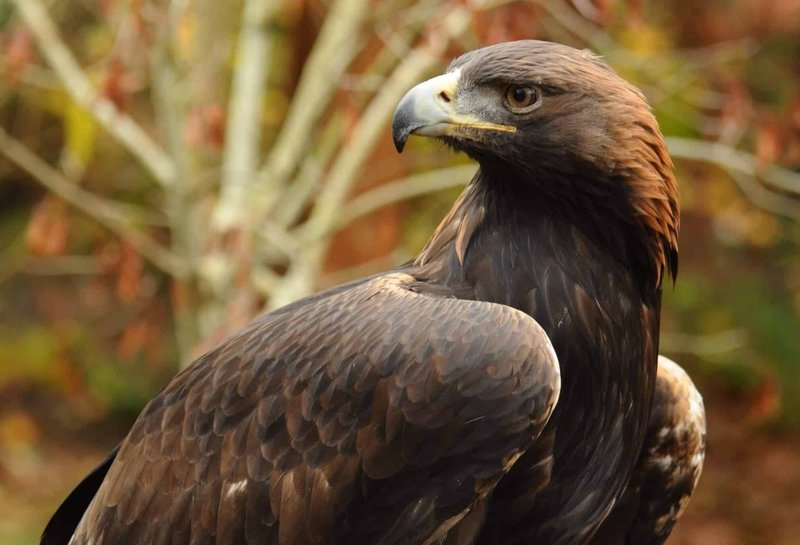
When you think about why cultures admire the golden eagle, it’s a bit like admiring a lion in the wild. Both represent power, freedom, and the untamed beauty of nature. Their impressive wingspan and keen eyesight make them hunters of the sky, inspiring tales of heroism and resilience in many traditions. So, let’s dive in and explore how the golden eagle has inspired folklore and culture in various regions around the world.
The Golden Eagle in Native American Culture
Native American tribes have long held the golden eagle in high regard. For many tribes, this bird is seen as a messenger between the physical and spiritual worlds. The eagle is often associated with the sun and is believed to embody spiritual strength.
Many tribes, like the Lakota and the Navajo, incorporate golden eagle feathers into their rituals and regalia. Feathers are used in ceremonies to signify honor, courage, and connection to the divine. When a tribal member receives a golden eagle feather, it’s not merely a gift; it’s an acknowledgment of their bravery and humility.
One powerful story from the Lakota tribe involves Wíiyuška, the eagle spirit, who symbolizes power and resilience. In their tales, Wíiyuška guides warriors to victory, reminding them of their spirit’s strength. You can see how deeply the bird is intertwined with identity, pride, and spirituality in these narratives.
Golden Eagles in European Folklore
In European cultures, the golden eagle has often been associated with nobility and sovereignty. Ancient Romans viewed the eagle as a symbol of power and military strength, frequently using the bird as an emblem on their standards. To them, seeing a golden eagle was a sign of impending victory.
In Celtic mythology, the golden eagle is a symbol of bravery and the connection between earth and sky. The legend of the *Kuklos* depicts a golden eagle as a protector of nature and a guide to souls transitioning into the afterlife. These narratives emphasized the golden eagle’s role as a fierce protector, embodying the spirit of the land.
You might find it fascinating to know that in medieval Europe, the golden eagle often appeared in heraldry. It signified valor and was commonly used by rulers to assert their dominance. These stories and symbols allowed the eagle to soar beyond mere natural beauty into the realm of power and legend.
The Symbolism of the Golden Eagle in Asia
In various Asian cultures, the golden eagle is seen as a powerful symbol of freedom and bravery. In Mongolia, for instance, the golden eagle is not just admired—it’s celebrated in traditions like eagle hunting. This ancient practice involves training the bird to hunt prey, emphasizing the bond between the eagle and the hunter.
Mongolian folklore often features golden eagles as symbols of loyalty and protection. They are believed to possess a spirit that guides and helps their handlers during hunts. Stories passed down through generations illustrate the mutual respect between human and bird, highlighting their intertwined destinies.
Similarly, in Tibetan Buddhism, the golden eagle holds spiritual significance. Eagles are often depicted in art as protectors of the heavens, carrying the prayers of the people to the divine. This reinforces the idea that golden eagles serve as messengers between realms, reminding us of the interconnectedness of life.
Golden Eagles in Indigenous Cultures Worldwide
Around the world, indigenous cultures share a deep respect for golden eagles. In the Arctic regions, the eagle is considered a symbol of the sky’s power. The Inuit people believe that golden eagles possess the power to communicate with spirits, often incorporating them into rituals to seek wisdom and guidance.
In New Zealand, the Māori people view the eagle as a sacred creature. They associate the golden eagle with *Tāwhirimātea*, the god of the winds, and believe it brings messages from the spiritual realm. This deep reverence highlights how the golden eagle transcends the physical world and embodies significant spiritual truths.
Stories of golden eagles often revolve around themes of transformation and enlightenment. For many indigenous cultures, these birds serve as powerful teachers, offering lessons on strength, courage, and the balance of life. It’s a wonderful example of how nature not only inspires art and storytelling but also serves as a mechanism for cultural understanding.
The Conservation of Golden Eagles and Cultural Significance
As much as we admire these magnificent birds, conservation is becoming increasingly important. With habitat loss and hunting pressures, golden eagles face numerous challenges. Many cultures are now actively working to protect them, as the eagle is not just an animal but also a vital part of their heritage and identity.
Efforts to conserve golden eagles often involve education and community engagement. Many indigenous groups are leading initiatives to raise awareness about the importance of protecting these birds. They understand that preserving the golden eagle also means preserving their stories, traditions, and connections to the land.
Here’s the thing: when we protect the golden eagle, we’re also safeguarding a piece of our own cultural legacy. By ensuring these birds thrive, we allow future generations to continue sharing the stories and significance that come with the golden eagle.
The Golden Eagle in Modern Culture
Today, the golden eagle continues to captivate people worldwide. From its majestic flight featured in documentaries to its appearance in films and literature, the eagle symbolizes freedom, breathtaking beauty, and an innate connection to the natural world.
Modern media often pairs the golden eagle with themes of triumph and hope. For example, you’ll find it as a national symbol in various countries, representing ideals like resilience and strength. The imagery connects us, reminding us of the beauty and power of nature that many cultures have revered for centuries.
In art and literature, the golden eagle often emerges as a protagonist, reflecting societal values and dreams. From epic fantasy novels to children’s books, you might encounter this bird as a guide or a fierce protector, embodying everything that we aspire to be.
The golden eagle’s role in cultures and folklore is vast and multifaceted. Its representation as a powerful symbol of strength, spirituality, and freedom transcends borders, reminding us of our shared heritage. As we explore these diverse narratives, we uncover the deep connections between humans and nature—an understanding that influences our identity and worldview.
By appreciating these cultural stories, we not only celebrate the golden eagle but also commit to ensuring its survival. The future of this magnificent bird depends on our collective efforts to honor and protect it. So, the next time you catch a glimpse of a golden eagle soaring through the sky, remember the stories and traditions that make it so much more than just a beautiful bird. It’s a reminder of the strength we all carry within ourselves.

